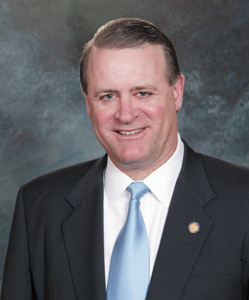STRAIGHT FROM THE SENATE

CONSIDERING PROS, CONS OF NEW MINIMUM WAGE LAW
Friday, July 24, was a significant day for both employers and employees as a new minimum wage took effect in Indiana. There is still considerable debate about whether or not the increase is a good thing for Hoosiers.
For the estimated 10,000 Hoosiers now earning minimum wage, it means an extra 70 cents per hour. Indiana joined 28 other states in raising the minimum wage from $6.55 to $7.25 per hour.
For those making the minimum, this appears to be good news. But there are some who worry that the timing of this increase – coming when businesses are struggling to emerge from a recession-ridden economy – will hurt more than help. There is fear of businesses not being able to afford the mandatory increase and laying more people off as a result. Or, in other cases, not hiring as many as they might have under the old wage scale.
I thought it important to offer some perspective on the minimum wage issue.
First, we should remember that minimum wage jobs are largely for entry-level workers. They are meant to introduce youth to the workforce and not intended to support a family. These first jobs are so important at building good work habits and confidence in young people who are crossing the threshold from high school student to a member of the workforce. It’s here they learn to follow instructions, meet deadlines and develop good attendance habits.
Every time the minimum wage increases, however, some of these important “first jobs” are taken away from our youth. A small business looking for summer help might only employ nine people instead of ten. A larger company might only employ 90 instead of 100. While paychecks grow for some, opportunity may be lost for others.
In the big picture, a minimum wage increase may have only minimum impact. According to the Indiana Department of Workforce Development, there were 1.8 million hourly workers in Indiana during 2008.
Of those, only 64,000 had earnings at or below minimum wage – about 3.5 percent of the workforce.
Only 10,000 of those 64,000 were actually making minimum wage. There were 54,000 others actually earning below the minimum. These are primarily people involved in service, sales and personal care. In some cases, those salaries are augmented by tips.
Who are the minimum wage earners? Nationwide, about half of them are 24 years of age and younger. Here in Indiana, the largest group at minimum wage is teenage workers – as we said, the segment of society experiencing their first jobs. Next highest in number are those between the ages of 20 and 24.
When you look at the education level of minimum wage workers, there are certainly lessons to be learned. Nearly 60 percent of them across the nation are people with a high school diploma or less. About 34 percent of them had some college, while only 8.3 percent of them were those with a college degree or more. Education, especially higher education, remains the best path to a higher income.
But we must remember the path to a higher education is often supplemented by those important first jobs. Here’s hoping the minimum wage increase won’t decrease important opportunities for our youth.
Sen. David Long (R-Fort Wayne) is President Pro Tem of the Indiana Senate. He serves District 16, which includes portions of Fort Wayne.
- Celebrating 20 Years Of Community At The Stand - April 12, 2024
- First Positive Case Of Chronic Wasting Disease In Indiana - April 12, 2024
- Southwest Allen County Schools Embark On Major Tree Plantings - April 12, 2024


